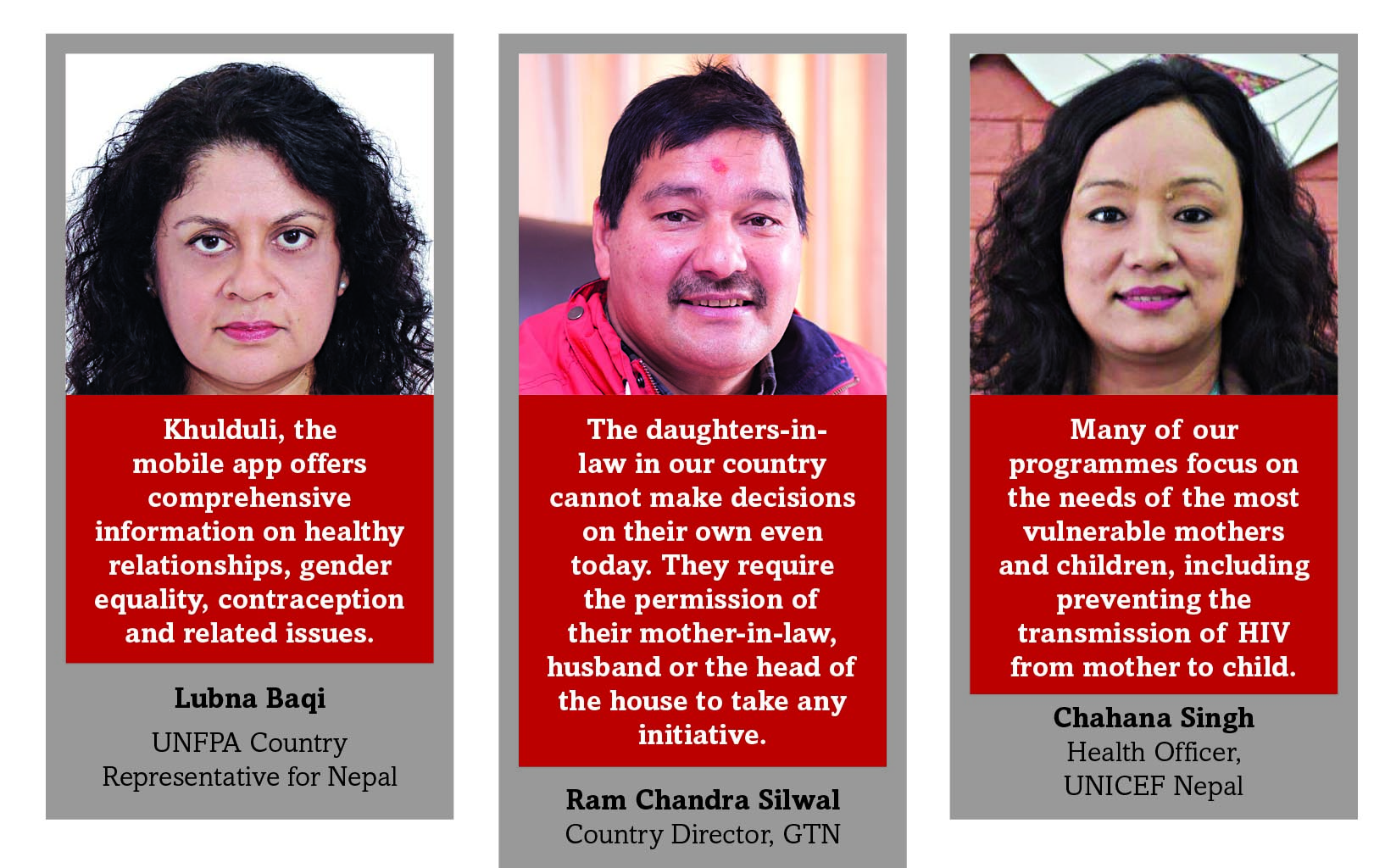
By Ankita Jain
Nepal has made substantial progress in improving maternal health care access and utilisation. Over the past decade, more women in Nepal are giving birth in a health facility than at home – another factor that has reduced the risk of postpartum haemorrhage (loss of blood following the birth), which is the leading cause of maternal deaths worldwide. The role of development agencies in the country has been tremendous in making this possible.
According to the Nepal Demographic and Health Survey 2016, the maternal mortality ratio (MMR) in Nepal decreased from 539 maternal deaths per 100,000 live births to 239 maternal deaths per 100,000 live births between 1996 and 2016. In 2016, roughly 12% of deaths among women of reproductive age were classified as maternal deaths. Nepal has committed to doing its part to achieve Sustainable Development Goal (SDG) target 3.1 of reducing the global MMR to less than 70 maternal deaths per 100,000 live births by 2030. To achieve this ambitious target, Nepal will need to reduce its MMR by at least 7.5% annually addressing severe inequities in maternal health access, utilisation and quality. As per UNICEF reports, it has been observed that there are fewer newborns dying during birth from 33 deaths per 1000 live births in 2011 to 21 per 1000 live births in 2016.
Rolling up its sleeves to address the problem and bring down maternal mortality rate, The United Nations Population Fund (UNFPA) has found the solution via technology. Targeting the youth (10-24 years) which constitutes 32 % of Nepal’s population, UNFPA recognised the importance of the digital world and launched a mobile application. “To help young people learn about their bodies and to adopt a healthy lifestyle, the National Health Education, Information and Communication Center under the Ministry of Health and Population, with the support of UNFPA and GIZ developed a mobile app called ‘Khulduli’ specifically for adolescents and young people. The mobile app offers comprehensive information on healthy relationships, gender equality, contraception and related issues. It is designed to give accurate information and empower young people to make informed choices to safeguard their future and wellbeing. The app is available through Google Play Store,” says Lubna Baqi, UNFPA Country Representative for Nepal.
Baqi further adds, “Most of the young population rely on different digital platforms or on their peers to seek information about their sexual and reproductive health — in the absence of information and guidance from reliable sources such as teachers, health workers, parents who are often not well equipped to provide sex education. Young people lack accurate information about sexual and reproductive health and are exposed to harm.”
Established in 2007, Green Tara Nepal (GTN), a nongovernment organisation, has been working in the field of maternal and child health. Over the decade, Ram Chandra Silwal, Country Director, GTN has observed few loopholes in the government strategies regarding postpartum care. “Today the government demands three-time checkup of the mother and the newborn in the first-week post delivery. The first checkup is on the day of delivery, the second after two days, and the third on the seventh day. As per reports, the chances of death are high in the first week. But practically speaking, the last two checkups are nearly impossible. Considering the state in rural areas where health centres are miles away, it would be impractical to make the mother and newborns travel so long. Rather, the government should assign health workers in those areas to examine them in their homes.
Further, the daughters-in-law in our country cannot make decisions on their own even today. They require the permission of their mother-in-law, husband or the head of the house to take any initiative. In this case, rather than educating only daughters-in-law, we are educating the head of the family by collaborating with village influencers, he adds.” This project is known as Amplify Change and is being executed in Nawalparasi. It aims to empower young people, men and women to realise their sexual and reproductive rights.
Khulduli, the mobile app offers comprehensive information on healthy relationships, gender equality, contraception and related issues.
Lubna Baqi UNFPA Country Representative for Nepal
The daughters-in-law in our country cannot make decisions on their own even today. They require the permission of their mother-in-law, husband or the head of the house to take any initiative.
Ram Chandra Silwal Country Director, GTN
Many of our programmes focus on the needs of the most vulnerable mothers and children, including preventing the transmission of HIV from mother to child.
Chahana Singh Health Officer, UNICEF Nepal
Elaborating on the strong cultural beliefs and practices in Nepal, Chahana Singh, Health Officer, UNICEF Nepal, reveals, “The phases before and after birth are critical and the period after a mother has delivered requires significant attention. Unfortunately, we still see women not using the post-natal services and some of the reasons preventing them include strong cultural beliefs and practices. Certain social norms, for example, do not allow postpartum women to come out of the house for 13 days after delivery. We have heard the incomprehensible stories of a mother and her newborn being forced to stay in a cowshed because of the belief that they are ‘untouchable’.
On the positive side, antenatal and delivery care has shown progress over the years. In 2016, more than 80% of pregnant women received at least one visit by a skilled provider, while 69% of these women visited health facilities.” In 1991 in partnership with WHO, UNICEF helped launch the Baby-Friendly Hospital Initiative to support exclusive breastfeeding and maternal health after birth. It has been working on improving maternal health in Nepal since 1997.
While UNFPA is working towards filling the gap in human resource, UNICEF is focusing on building capacity through sufficient training. “We are working with the Ministry of Health and Population to address the gap in human resource, particularly focusing on the midwifery education. The UNFPA programme also aims to address reproductive morbidities. This includes efforts to prevent and treat obstetric fistula, pelvic organ prolapse and cervical cancer. We have also built capacities in the health sector to respond to cases of gender-based violence, including referral for other support services, psychosocial counseling etc. Also, an estimated 43% of deliveries still occur at home in the absence of skilled birth attendants.
There is a need to address intersecting elements – such as violence against pregnant women and inadequate spousal and family support during pregnancy and the post-partum period. Furthermore, excluded groups such as people with disabilities continue to face challenges in accessing health care, including sexual and reproductive health services and this need to be further addressed,” shares Baqi.
>Adding to Baqi’s argument, Singh states, “We help to build the capacity of service providers such as providing training for Skilled Birth Attendants, and providing onsite coaching and mentoring as well as other types of training such as Emergency Obstetric Care monitoring and Infection Prevention Training. Many of our programmes focus on the needs of the most vulnerable mothers and children, including preventing the transmission of HIV from mother to child.”
Overall, Nepal has made substantial progress in improving maternal health care access and utilisation. However, disparities remain according to women’s socioeconomic status, education level and place of residence. Additionally, efforts are needed to improve the quality of maternal health care to end preventable maternal deaths. “As compared to other countries, Nepal is improving immensely in this sector. And the government-development agencies partnership played a poignant role,” summarises Silwal.



-1765706286.jpg)
-1765699753.jpg)

